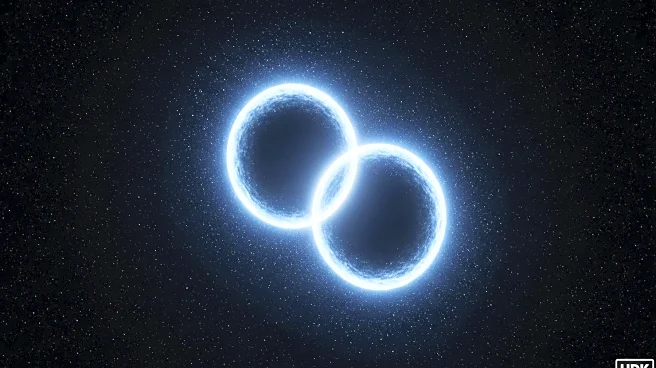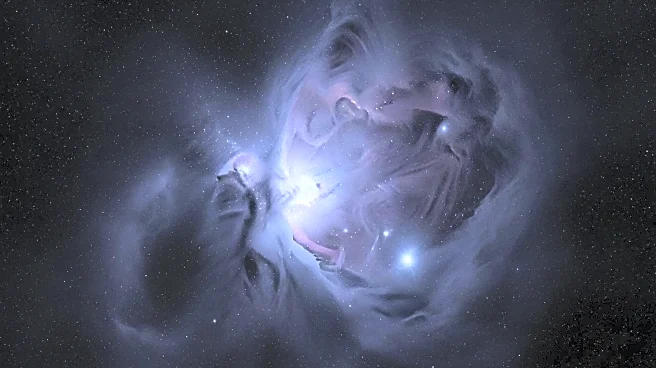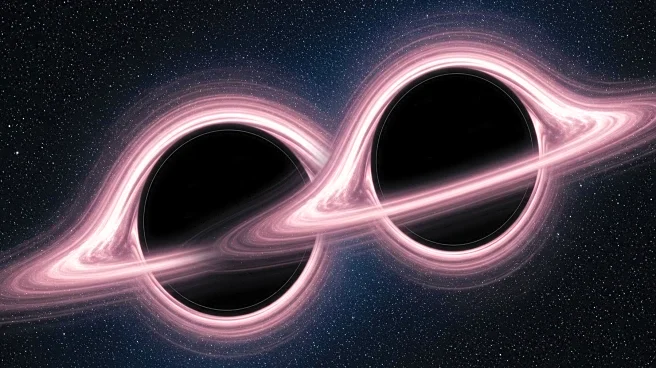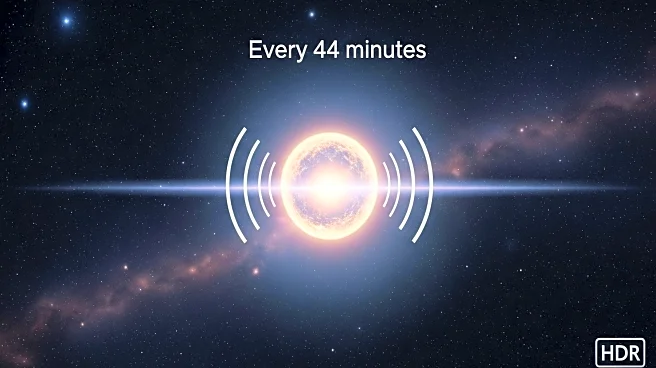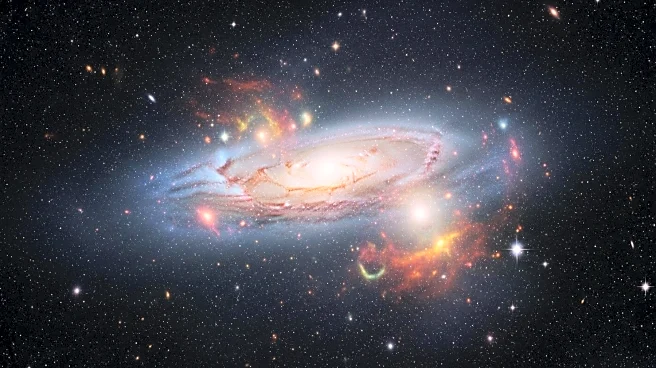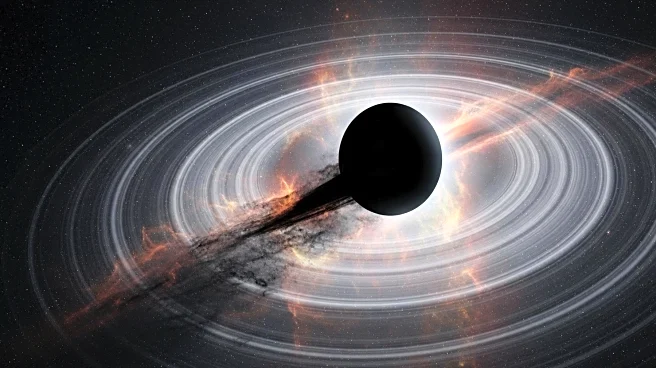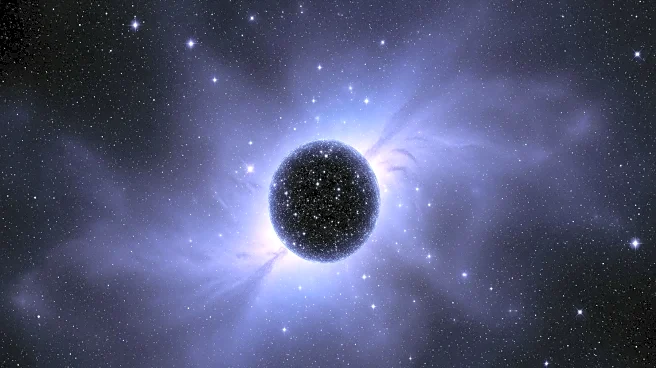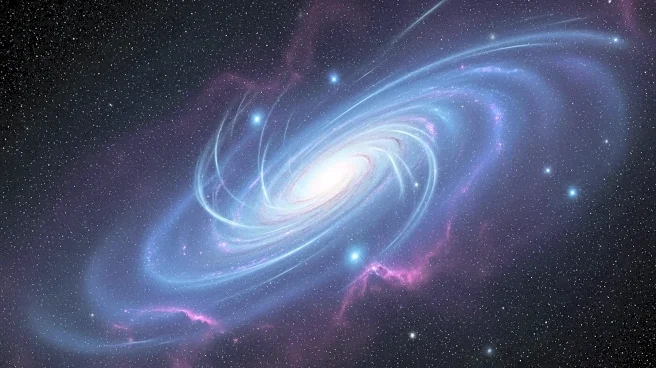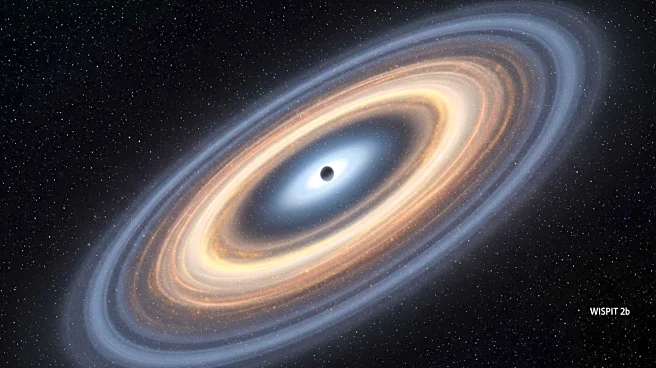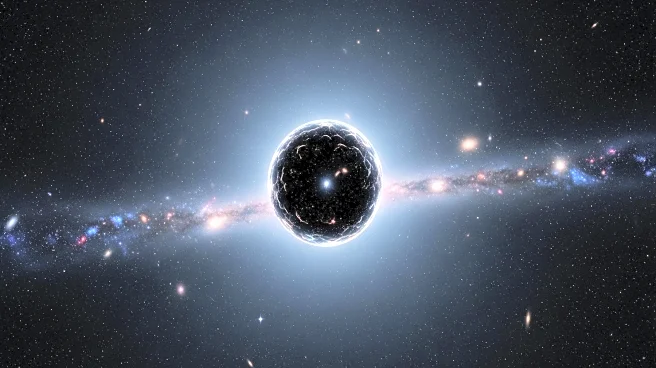What's Happening?
Citizen scientists have discovered several new 'odd radio circles' (ORCs) in distant galaxy clusters, expanding our understanding of these mysterious cosmic structures. ORCs, first identified in 2019, are massive ring-like formations detectable only by radio telescopes. The recent discoveries include twin ORCs, the most distant and powerful system found so far, located about 7 billion light-years away. These rings are believed to be relics of past outbursts from galaxies, re-energized by radiation from black-hole activity or starbursts. The findings were confirmed by the Low Frequency Array of radio antennas in Europe.
Why It's Important?
The discovery of new ORCs challenges existing notions about the rarity and formation of these structures, suggesting they may be more common than previously thought. Understanding ORCs can provide insights into the co-evolution of galaxies and black holes, as well as the dynamics of cosmic environments. The involvement of citizen scientists highlights the importance of human pattern recognition in scientific discovery, even in an era dominated by machine learning.
What's Next?
The Square Kilometre Array, a giant radio telescope network set to become operational by the early 2030s, is expected to uncover many more ORCs. This could lead to a deeper understanding of the role of black-hole jets and winds in shaping cosmic structures. Continued collaboration between professional astronomers and citizen scientists will be crucial in analyzing the vast amounts of data generated by these observations.
Beyond the Headlines
The discovery emphasizes the potential of citizen science in contributing to major astronomical findings. It also raises questions about the interaction between radio jets and the intra-cluster medium, a fog of hot plasma in galaxy clusters, which may influence the formation and characteristics of ORCs.
